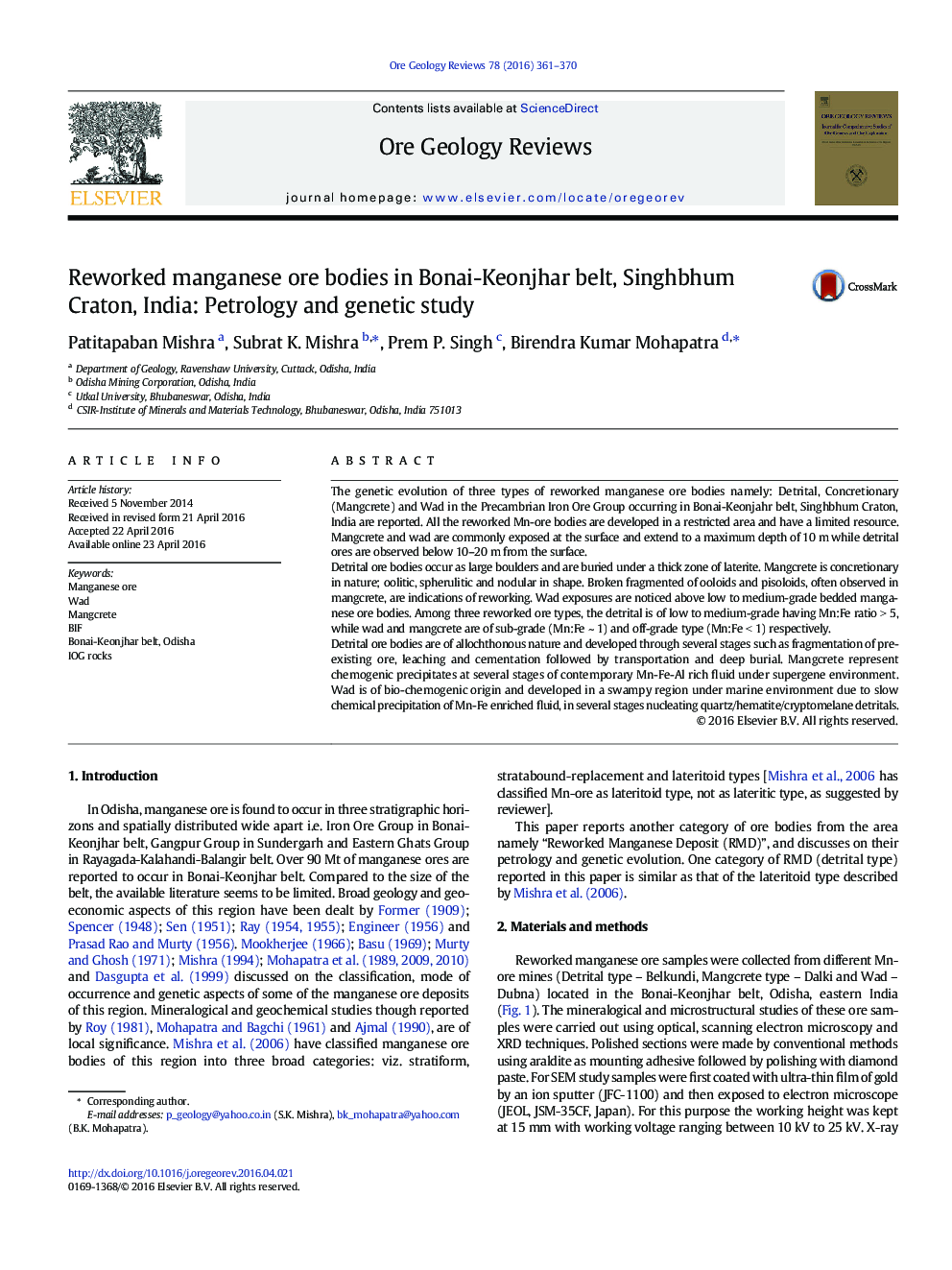| کد مقاله | کد نشریه | سال انتشار | مقاله انگلیسی | نسخه تمام متن |
|---|---|---|---|---|
| 4696856 | 1637228 | 2016 | 10 صفحه PDF | دانلود رایگان |

• Mn-ore deposits in Iron Ore Group, India, were previously classified in to: Stratiform, Stratabound and Lateritoid category
• This paper reports another category from the above geological set-up and termed it as “Reworked Manganese Deposit” (RMD)
• RMD is further grouped as: Detrital, Mangcrete and Wad deposits. The Detrital type is similar as that of Lateritoid deposit
• Field distribution and petrography of RMDs reveal their formation at a later stage under different environmental conditions
The genetic evolution of three types of reworked manganese ore bodies namely: Detrital, Concretionary (Mangcrete) and Wad in the Precambrian Iron Ore Group occurring in Bonai-Keonjahr belt, Singhbhum Craton, India are reported. All the reworked Mn-ore bodies are developed in a restricted area and have a limited resource. Mangcrete and wad are commonly exposed at the surface and extend to a maximum depth of 10 m while detrital ores are observed below 10–20 m from the surface.Detrital ore bodies occur as large boulders and are buried under a thick zone of laterite. Mangcrete is concretionary in nature; oolitic, spherulitic and nodular in shape. Broken fragmented of ooloids and pisoloids, often observed in mangcrete, are indications of reworking. Wad exposures are noticed above low to medium-grade bedded manganese ore bodies. Among three reworked ore types, the detrital is of low to medium-grade having Mn:Fe ratio > 5, while wad and mangcrete are of sub-grade (Mn:Fe ~ 1) and off-grade type (Mn:Fe < 1) respectively.Detrital ore bodies are of allochthonous nature and developed through several stages such as fragmentation of pre-existing ore, leaching and cementation followed by transportation and deep burial. Mangcrete represent chemogenic precipitates at several stages of contemporary Mn-Fe-Al rich fluid under supergene environment. Wad is of bio-chemogenic origin and developed in a swampy region under marine environment due to slow chemical precipitation of Mn-Fe enriched fluid, in several stages nucleating quartz/hematite/cryptomelane detritals.
Manganese ore deposits belonging to Iron Ore Group of Rocks in Bonai-Keonjhar belt, Singhbhum Craton, India are classified in to three categories such as Stratiform, Stratabound and Lateritoid types by earlier workers. The present paper describes another category of Mn-ore from the above set-up and termed it as “Reworked Manganese Deposits [RMD]”. Under RMD, three distinct types of ore such as Detrital (Reworked-I), Mangcrete (Reworked-II) and Wad (Reworked-III) have been described in respect of their petrography and genetic evolution.Figure optionsDownload as PowerPoint slide
Journal: Ore Geology Reviews - Volume 78, October 2016, Pages 361–370